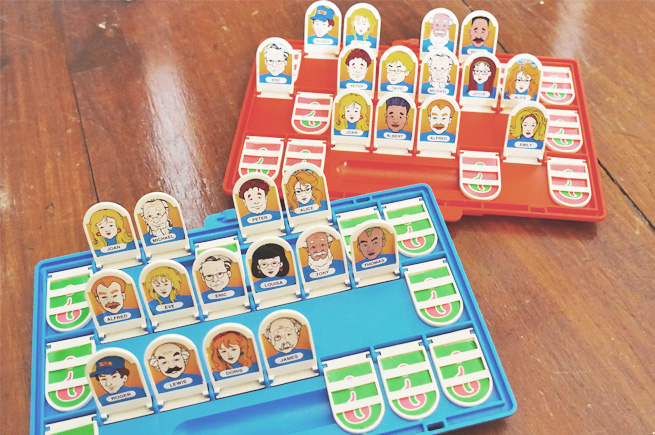Using AI to write your survey isn’t the problem. Thinking it’ll do the hard part for you is.
Most surveys fall apart because no one questioned the thinking behind them. This is a messy seven-step framework for using AI with care, curiosity, and critical thinking. It doesn’t skip the difficult bits. It slows them down, so you can actually get them right.
The Fastest Way to Ruin Your Survey with AI ❌
Think these sound like good prompts?
- “Write 10 questions about mental health”
- “Create a survey for Gen Z”
- “Generate 30 questions about music preferences”
- “Make a questionnaire about sustainability”
They’re not. They produce lifeless lists, hollow logic, and thin data. They assume AI will do the thinking for you. It can’t.
✅ Better Prompts Start Like This:
- “Simulate a 19-year-old who’s been surveyed five times this month already. What would make them roll their eyes or lean in?”
- “What does a 46-year-old in a rural town assume when they hear the word ‘sustainable’? How would you build trust before asking anything?”
- “Design a five-question flow that avoids social desirability bias when asking about streaming habits.”
✍️ Use AI Like a Researcher, Not a Script Generator
AI is not your copywriter. It’s your rehearsal partner. It helps you:
- Find assumptions before they ruin your sample
- Simulate tension before someone drops out
- Rewrite, reframe, and refocus, in human time
But the best work only happens when you edit, interrogate, and doubt the output. This guide teaches you how.
🎶 Threaded Example: Surveying Music & Meaning
Let’s say you’re designing a survey for a local youth programme.
You want to understand young people’s emotional and cultural relationship with music, not just what they listen to, but what music means in their lives.
You want the survey to work across urban and rural communities, spanning different access levels, languages, and confidence with music.
This guide shows how to use AI to help you design better, braver, and more human questions using this music thread to anchor each step.
🧭 7 Steps to Using AI for Survey Design
Step 1: Start with the Right Context
Before you write a question, define the world it lives in.
Survey questions don’t float in space. They land inside lives, with emotions, pressures, and contradictions. AI can only help if you first load it with real context.
Prompt Paths:
- “Simulate a 32-year-old who doesn’t consider themselves a music person. What would make them feel this survey is still for them?”
- “What assumptions might a survey about music make that don’t apply to rural youth?”
- “Write an intro paragraph that builds trust with someone who’s never filled out a survey before.”
🔍 Interrogate the Prompt, As a Human Would Do
- Simulate someone with no music streaming subscriptions. What does your intro now assume or get wrong?
- What beliefs are you embedding in the opening tone? Rewrite it without those beliefs.
- What does this intro sound like to someone who feels left out of music conversations? Rewrite it with them in mind.
Step 2: Design the Entry Point
The first question isn’t just a question. It’s a test of trust.
Every respondent makes a decision at the start: engage or perform, answer or rush. Your first few questions either invite honesty, or close the door.
Prompt Paths:
- “Write three emotionally generous opening questions about music that assume no prior confidence or ‘taste.’”
- “Simulate a respondent who thinks their answers will be judged. What first question lowers their guard?”
🔍 Interrogate the Prompt, As a Human Would Do
- What if someone hasn’t listened to music in weeks? Does the first question still make sense?
- Does the order of early questions reward confidence or curiosity? Rewrite with the latter in mind.
- Run three tone variations: warm, neutral, irreverent, and simulate the respondent reaction for each.
Step 3: Simulate the Human Experience
Surveys happen inside lives, not in labs.
Don’t just test logic. Test what it feels like to take your survey interrupted, tired, distracted, or deeply engaged. AI can simulate those moments before you burn real field time.
Prompt Paths:
- “Simulate taking this survey while emotionally distracted. Where does the respondent drop off or misread the tone?”
- “What does it feel like to move from question 3 to 4? Is the emotional arc jagged or smooth?”
🔍 Interrogate the Prompt, As a Human Would Do
- Simulate a neurodivergent respondent: what parts of the flow feel overloaded, rushed, or confusing?
- What if someone gets bored halfway through: does the next question re-engage or push them away?
- Does every transition feel like a continuation or a hard reset? Which works better?
Step 4: Surface Assumptions & Cultural Framing
Every question defines what’s normal. Don’t pretend otherwise.
Your phrasing reveals what’s assumed, valued, or invisible. AI can help find what’s left unsaid if you tell it to look for what’s not obvious.
Prompt Paths:
- “Rewrite this question for someone with no private space to listen to music.”
- “List three assumptions the survey makes about taste, access, and experience. Remove them.”
🔍 Interrogate the Prompt, As a Human Would Do
- Does the survey treat music as a hobby or a coping mechanism? Test both perspectives.
- What kind of relationship to music is being privileged? Casual? Passionate? Professional?
- Which phrasing would alienate someone who doesn’t think of themselves as ‘musical’?
Step 5: Clarify Without Flattening
Clarity doesn’t mean stripping out depth.
True clarity isn’t about making questions shorter; it’s about making them land emotionally, so the meaning feels simple even when the thought behind it isn’t.
A question can be clear and emotionally rich. The goal isn’t to simplify, it’s to connect.
LLMs love clean, short, friendly questions. That’s fine. Until your survey becomes a soulless list of “Good / Bad / Not Sure” options. AI can help you rewrite, but not if you ask it to oversimplify.
Worked Example:
✖ Prompt: “Write 5 questions about how someone listens to music.”
Output:
- How often do you listen to music?
- What’s your favourite genre?
- Do you use Spotify?
- Do you prefer headphones or speakers?
- Do you go to concerts?
✔ Better Prompt: “Write 5 questions that explore someone’s emotional and cultural connection to music, especially if they don’t listen often.”
Improved Output:
- When was the last time music surprised you?
- Is there a sound that reminds you of home?
- Has a song ever helped you get through something difficult?
- How do you feel when asked what music you like?
- Is there music you wish you understood better?
🔍 Interrogate the Prompt, As a Human Would Do
- What does ‘clear’ mean for different reading levels, backgrounds, or neurotypes?
- Try turning the survey into a voice note. What suddenly feels awkward?
- How would you explain this question to your nan or your mate in the pub? Rewrite it like that.
Step 6: Build for Accessibility Without Dumbing It Down
Accessible doesn’t mean generic. It means readable, respectful, and real.
Too many surveys flatten complexity in the name of simplicity, but clarity doesn’t require cultural erasure or assuming less of your audience. AI can help you stress-test for accessibility without losing nuance.
Prompt Paths:
- “Rewrite this question using plain language, without losing its emotional depth.”
- “Simulate this question being read aloud by a screen reader. Does it still make sense?”
- “How would someone with limited literacy experience this survey? Rewrite the three hardest questions.”
🔍 Interrogate the Prompt, As a Human Would Do
- Does the survey centre written comprehension over audio or visual understanding? Could that exclude people?
- Are your rating scales culturally loaded (e.g., 1–10 vs. smiley faces vs. ‘rarely/often’)?
- Run the survey through three different accessibility lenses: dyslexia, non-native English, and low digital literacy. What breaks? AI can flag potential barriers, but it can’t replicate lived experience. Always validate accessibility changes with real users wherever possible.
Step 7: Disrupt the Format (Where It Makes Sense)
Not everything needs to look like a Likert scale.
Some of these formats are deliberately unconventional. Use them when they serve meaning, not just novelty, and when their form helps reveal something a standard question can’t.
AI can help you imagine new flows, playful detours, or radically different ways to surface insight, if you prompt it to.
This is where you challenge the default. Not for the sake of being different, but because some topics deserve a different shape.
Prompt Paths:
- “Suggest five unusual but emotionally rich ways to ask someone about their connection to music.”
- “Design a question flow that changes subject halfway through to test attention and emotional re-engagement.”
- “Write two creative question formats that don’t rely on fixed-choice answers.”
🔍 Interrogate the Prompt, As a Human Would Do
- What would happen if this question made someone smile, laugh, or pause? Does your current design allow for that?
- Which parts of your survey feel like a form? Which feel like a conversation?
- Which question would you want to answer?
🧨 Experimental Survey Formats
Weird, playful, rule-breaking formats to provoke deeper human insight.
🪜 1. The Contradiction Engine
Ask two things that seem incompatible, on purpose.
🧠 Prompt:
“Write three pairs of questions about music taste that seem to contradict each other (but might reveal emotional nuance).”
🔁 Example:
- “What’s a genre you claim to hate?”
- “What’s a song in that genre you secretly enjoy?”
💬 Follow-up prompt:
“Create a short explanation to help the respondent feel comfortable answering both honestly, without shame or overthinking.”
🔀 2. Choose-Your-Own-Path
Let respondents select a direction, and their question flow changes.
🧠 Prompt:
“Design a branching question structure based on how someone answers this: ‘When it comes to music, I’m mostly… [a feeler / a thinker / a passive listener / a total nerd].’”
🎧 Example Flow:
- If ‘feeler’: → emotional memory and mood
- If ‘thinker’: → lyrics, structure, theory
- If ‘passive’: → background sound and ambient habits
- If ‘nerd’: → playlists, genres, sharing
💬 Bonus tip:
Have one question at the end where all paths converge. Something abstract that unites everyone.
🧃 3. The Compressed Story
Use a tight set of questions to tell a micro-narrative.
🧠 Prompt:
“Write three questions that together form a mini emotional journey about someone’s relationship with music.”
💥 Example:
- “When does music feel like noise?”
- “When does it feel like language?”
- “Where do you go when the music stops?”
💬 Reflection idea:
Offer a closing moment that lets them reflect:
“If these answers say something about you, what do you think it is?”
🧙 4. The Oracle Format
Give them a surreal question with an open end. Symbolic projection over logic.
🧠 Prompt:
“Write a metaphor-based question about music that invites projection, not opinion.”
🌀 Examples:
- “If your music taste lived in a house, what would it look like inside?”
- “What creature best captures how you feel when a favourite song plays?”
💬 Tip:
Use sparingly. These are emotional curveballs, powerful or confusing depending on your audience.
🔊 5. The Noise Layer
Insert one or two questions that don’t quite “fit”, but provoke instinctive reactions.
🧠 Prompt:
“Suggest three questions that feel like emotional or conceptual noise, designed to unsettle or provoke.”
🧩 Examples:
- “Have you ever lied about your music taste?”
- “What would silence accuse you of?”
- “Is music louder inside your head or outside of it?”
💬 Tip:
Follow each with a question that re-centres the tone.
🧯 Ethics, Consent, and Data Fragility
AI can help with survey design, but it cannot guarantee ethical research. That part’s on us.
When using AI to shape or stress-test surveys, ask:
- Are we using AI to save time, or to avoid the hard work of listening?
- Is our use of synthetic personas masking real diversity or reinforcing stereotypes?
- If we simulate respondents, we risk blurring the line between fiction and consented participation.
Prompt Paths:
- “List five ethical risks of using synthetic personas in survey design. How might we mitigate each one?”
- “How could simulated responses accidentally erase the real-world messiness we’re trying to understand?”
- “Suggest three researcher check-ins to run before deploying an AI-assisted survey.”
💬 Final musings for now:
AI doesn’t absolve responsibility. It deepens it. It offers power, speed, and flexibility, but without human check-ins, it’s just automation at scale.
🧾 This Is a Living Document
This guide isn’t a finished product. It’s a working framework.
Adapt it. Remix it. Rethink it.
Whether you’re building surveys for youth programmes, product feedback, or cultural research, treat this as a toolkit, not a rulebook.
You can customise every part to fit your own use cases.
Build prompt libraries. Save versions into your private custom GPTs.
Refine the structure over time as your audiences, methods, and questions evolve.
Good survey design doesn’t start with AI.
It starts with care, curiosity, and critical thinking.
The thinking is the hard part. AI just helps you see it sooner.










